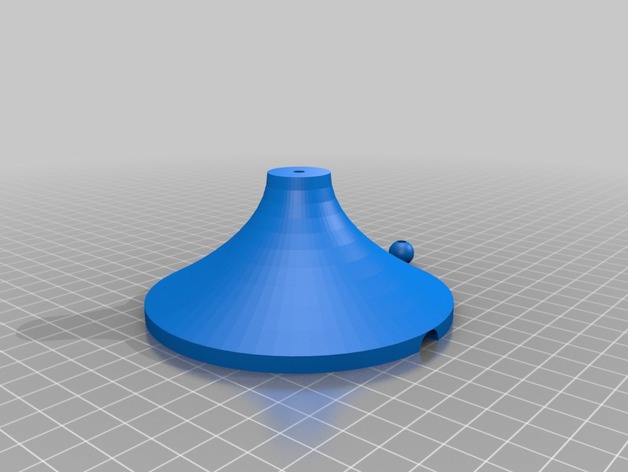
Antenna
thingiverse
John Doe's Dipole Antenna. My Setup (I assume, if you build this, you know what you are doing): 4mm Brass rod (for indoors, it should be fine and easy to solder) from the hardware store. Carefully enlarge the 4mm hole in the socket. Move the drill inside the socket a bit until the rod can be moved with some force. Unstrip Coax inner lead for several centimeters and fold the shield back. Wrap the inner lead two times around the very end of the rod. Heat it up with a gas torch, add solder. Be careful; the heat will make the socket material soft. I removed three rubber feet from a broken Ethernet switch and stuck them to the bottom of the eBay item. However, that thing is really on the heavy side. Use some reasonable weight to hold your antenna straight up. Glue it all up with a huge amount of strong, elastic glue (I used Pattex Kraftkleber, but I am sure you have something similar in the anglophone world), so that the shield touches the steel plate and Coax inner lead/brass rod do not, which I ensured with a bit of isolation tape. The little ball is for the other end of the rod. Crimp BNC to the other end of Coax. To generate the cubic curve, I use FreeCAD and this Julia snippet to generate coordinates: x = 40 y = 60 for i = 0 : .1 : 1 print ("($(i x), $ (i^2 * x))\n") end Brass (and copper) is not the perfect material for an antenna. At high frequency, the skin effect dominates and if your antenna "skin" is made of badly conducting oxide, your antenna will perform poorly. For indoors, beautiful, shiny, golden brass should be quite okay, brass itself conducts pretty well. However, aluminum is much better but not quite as easy to solder.
With this file you will be able to print Antenna with your 3D printer. Click on the button and save the file on your computer to work, edit or customize your design. You can also find more 3D designs for printers on Antenna.
